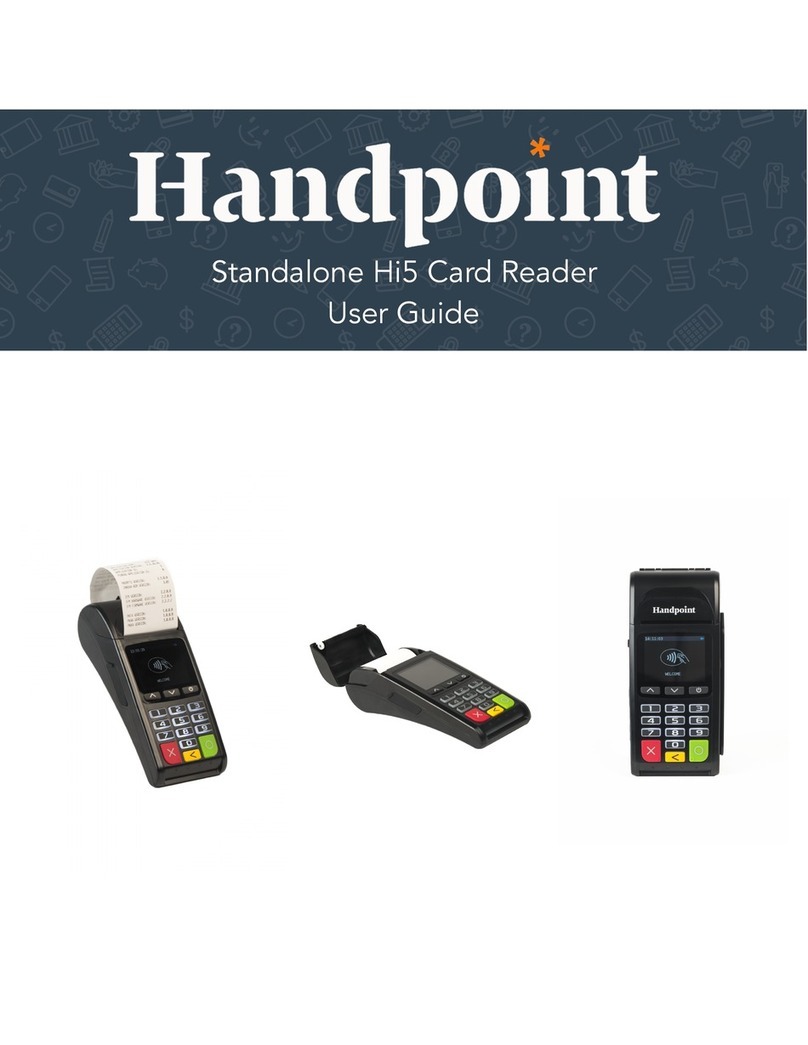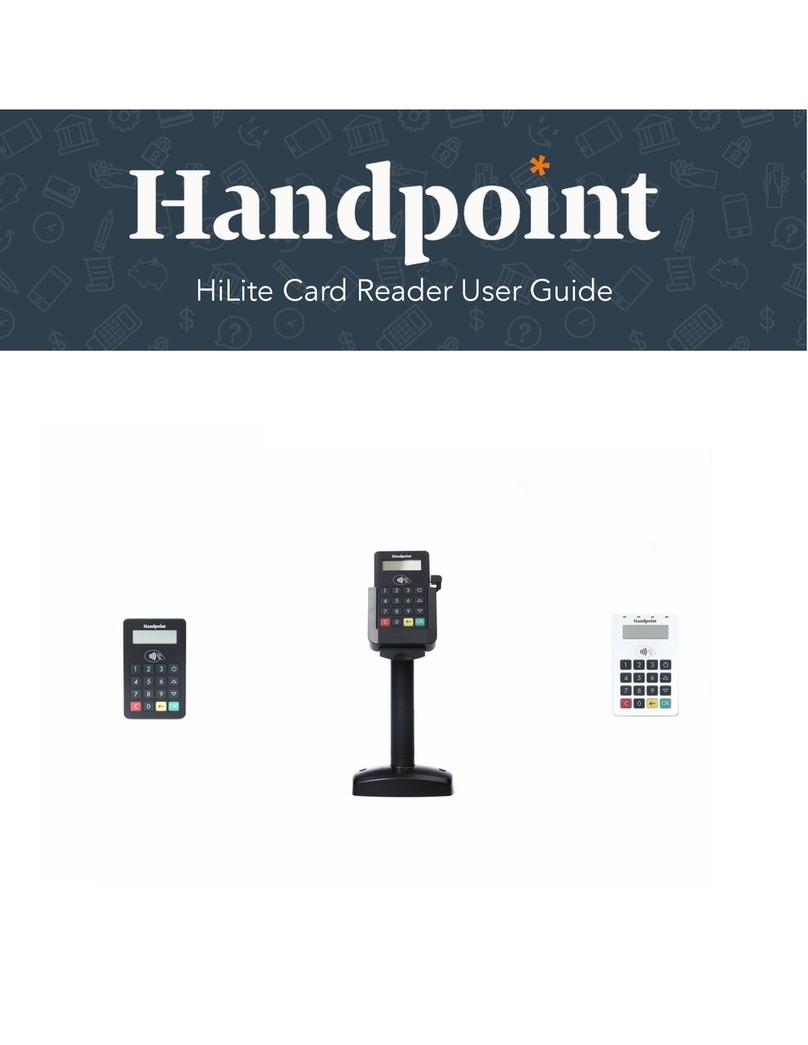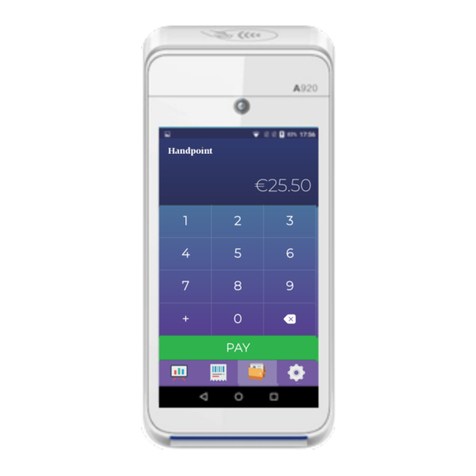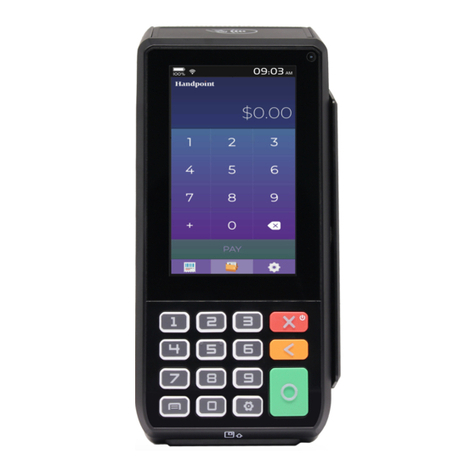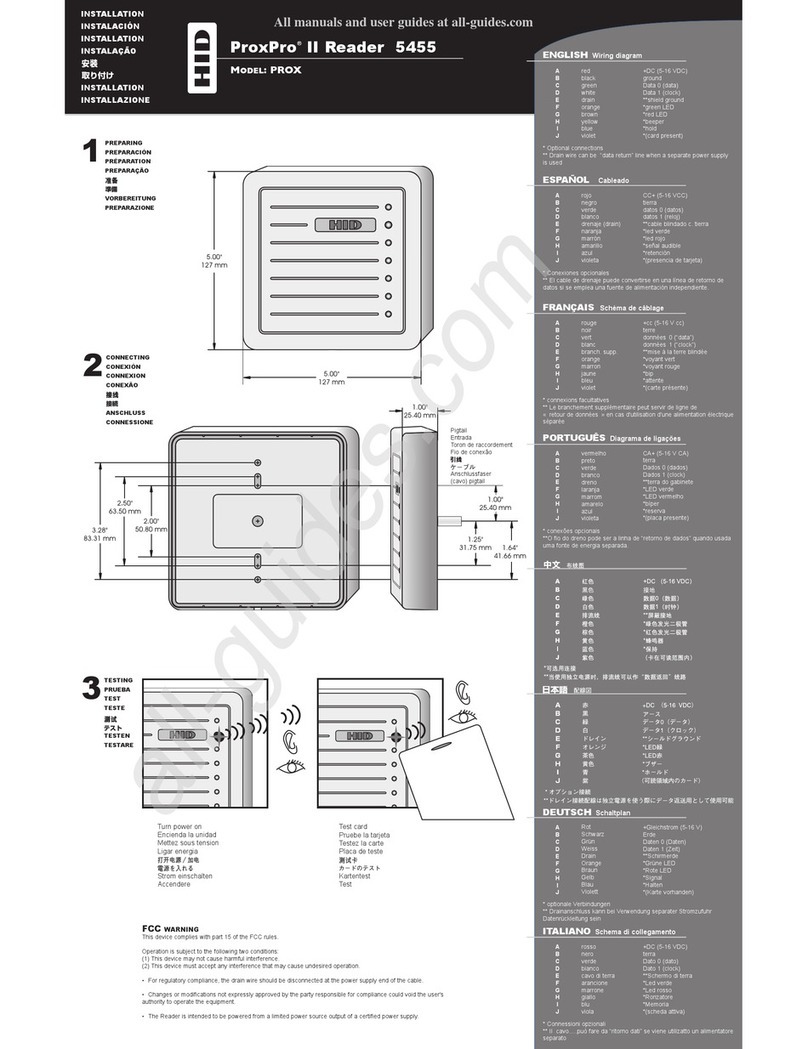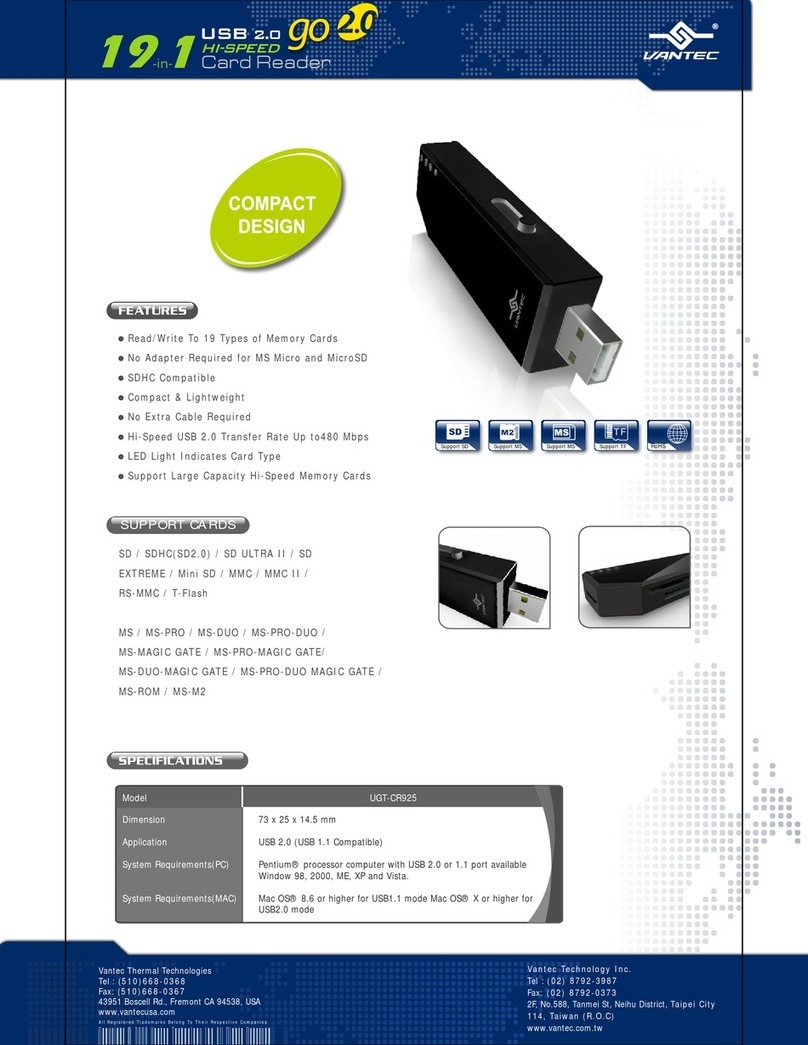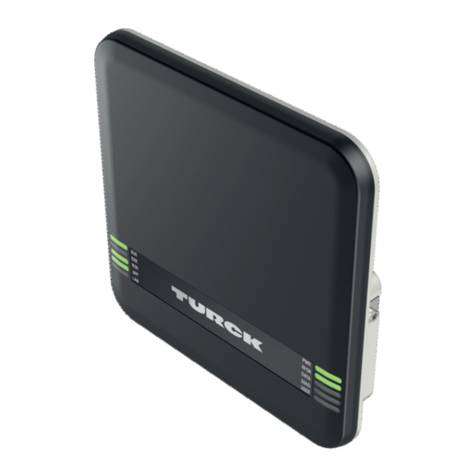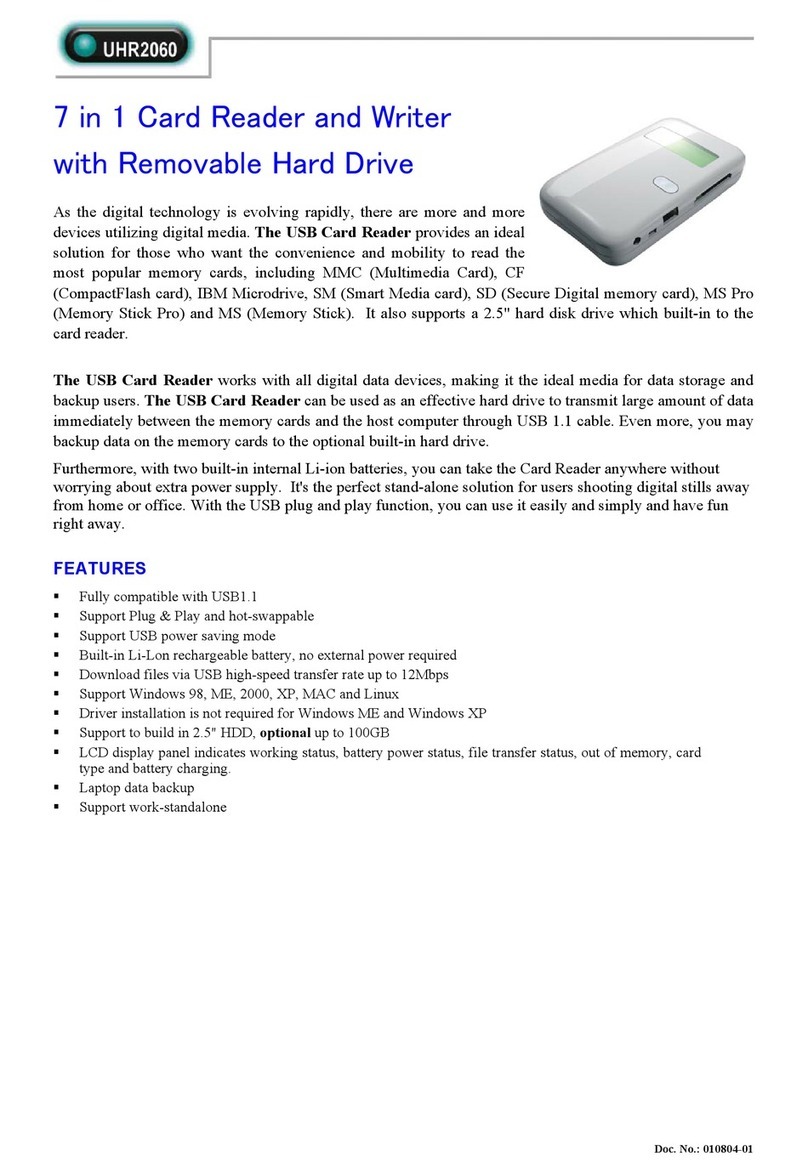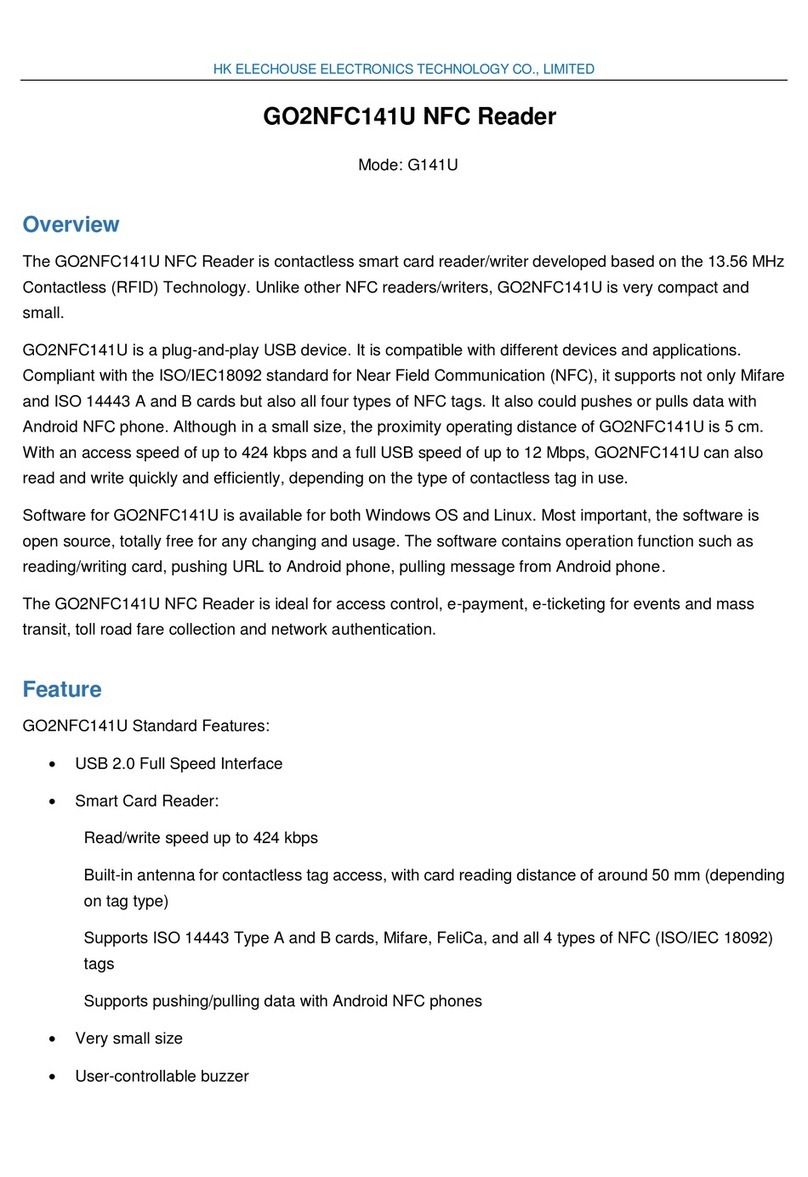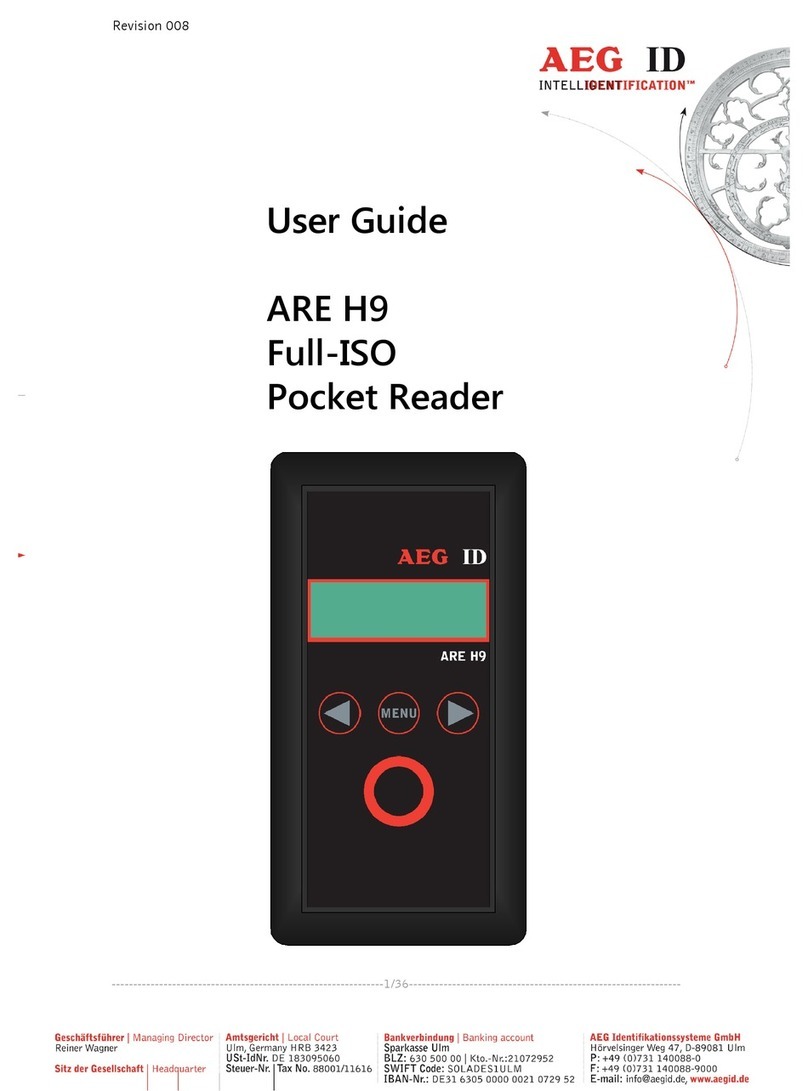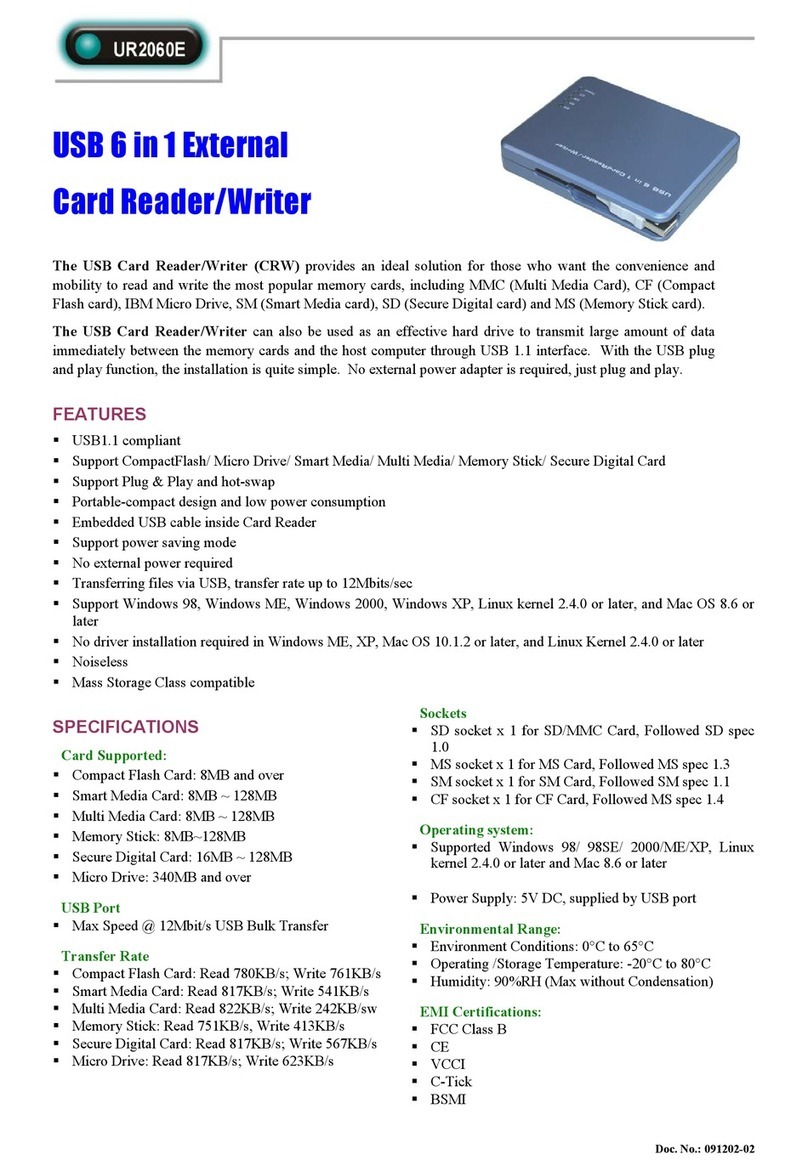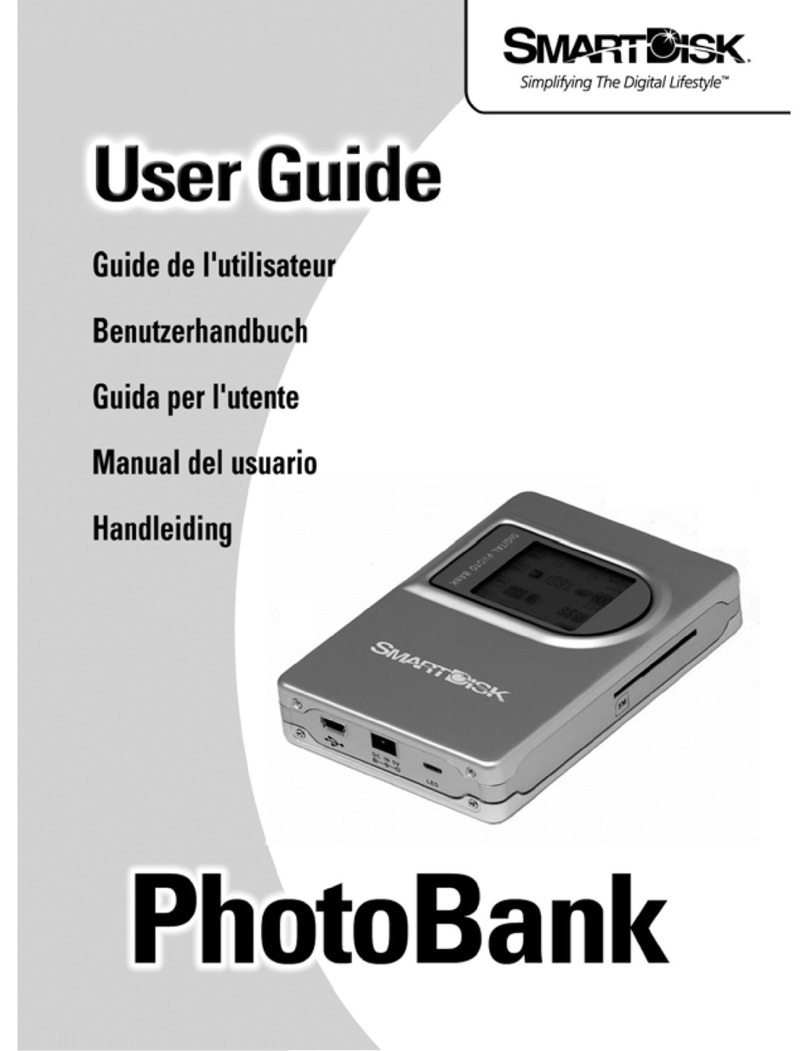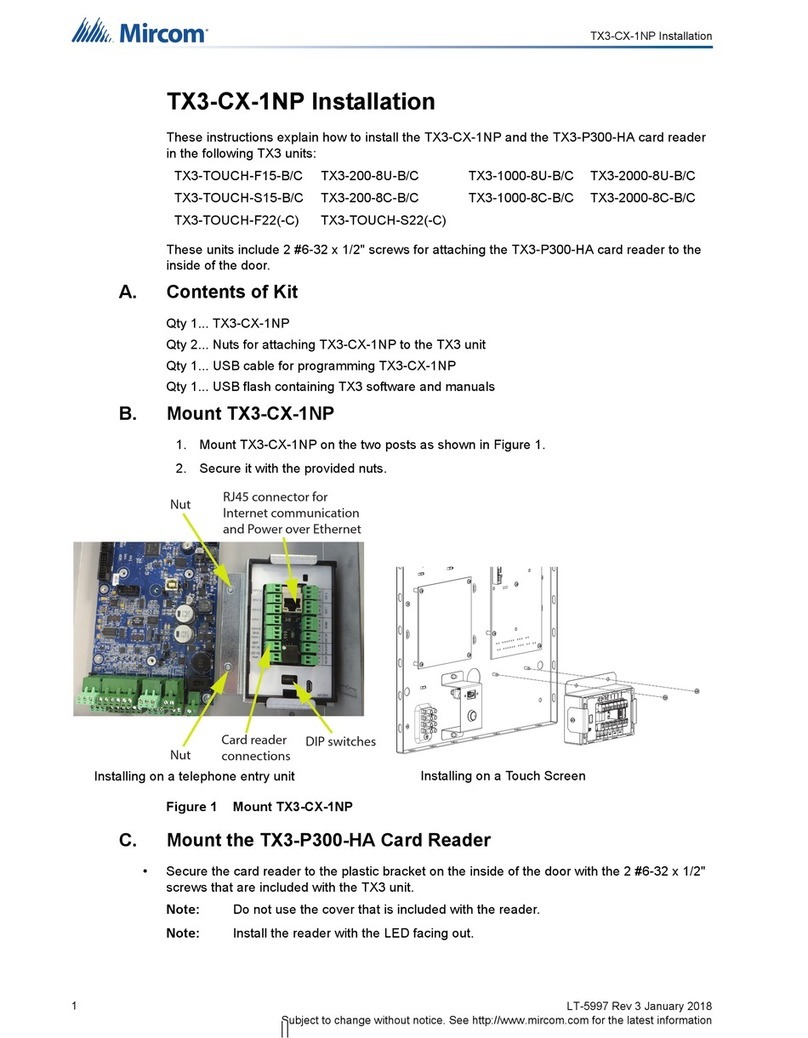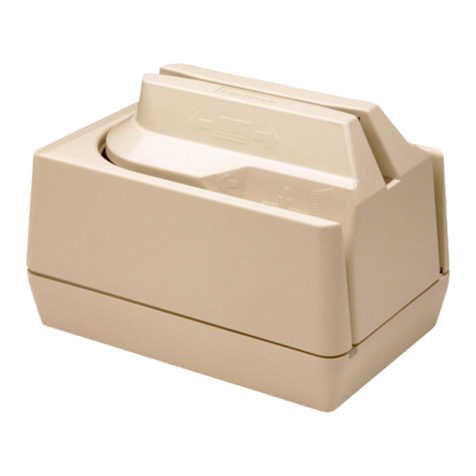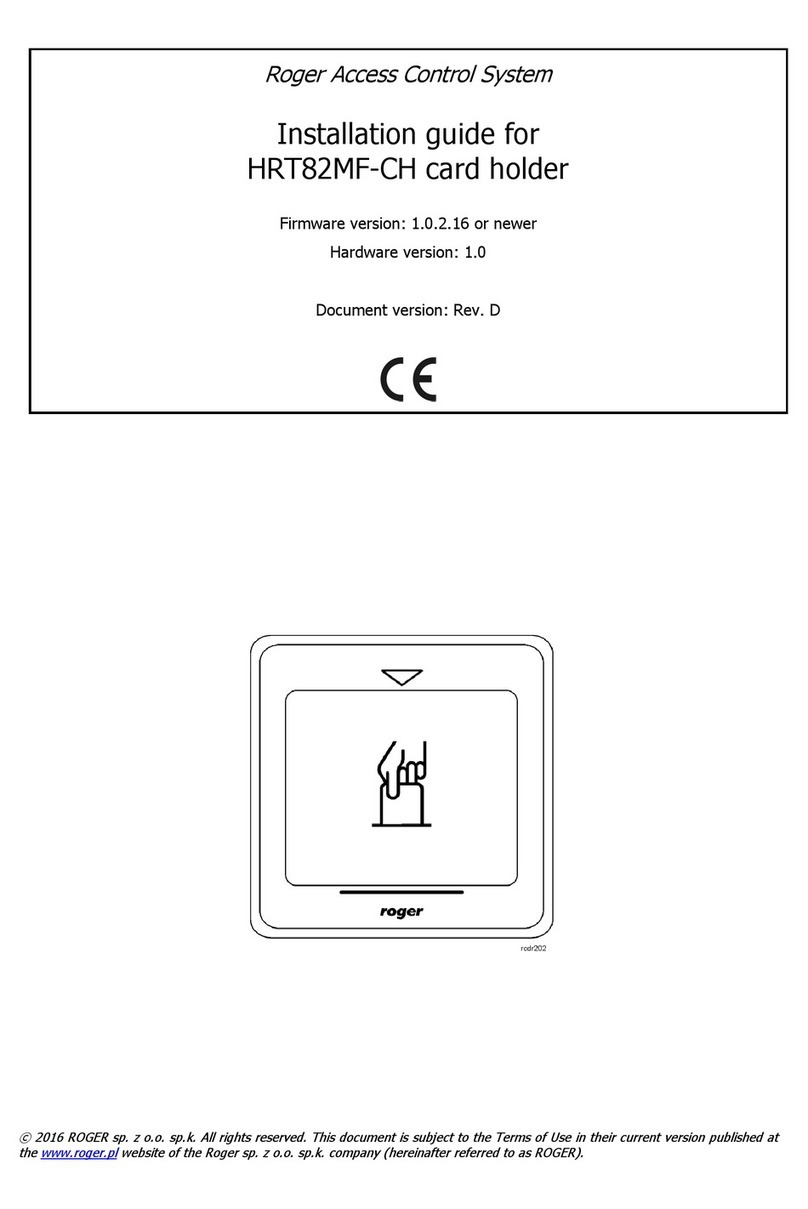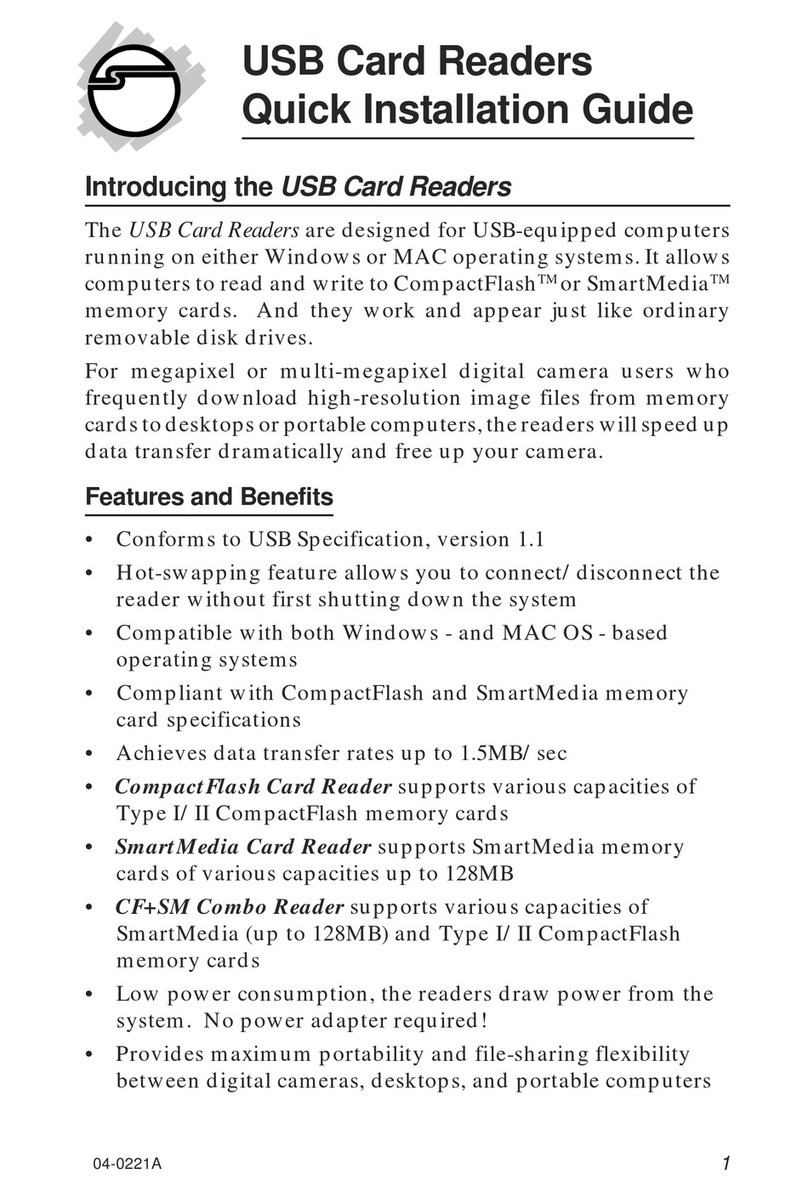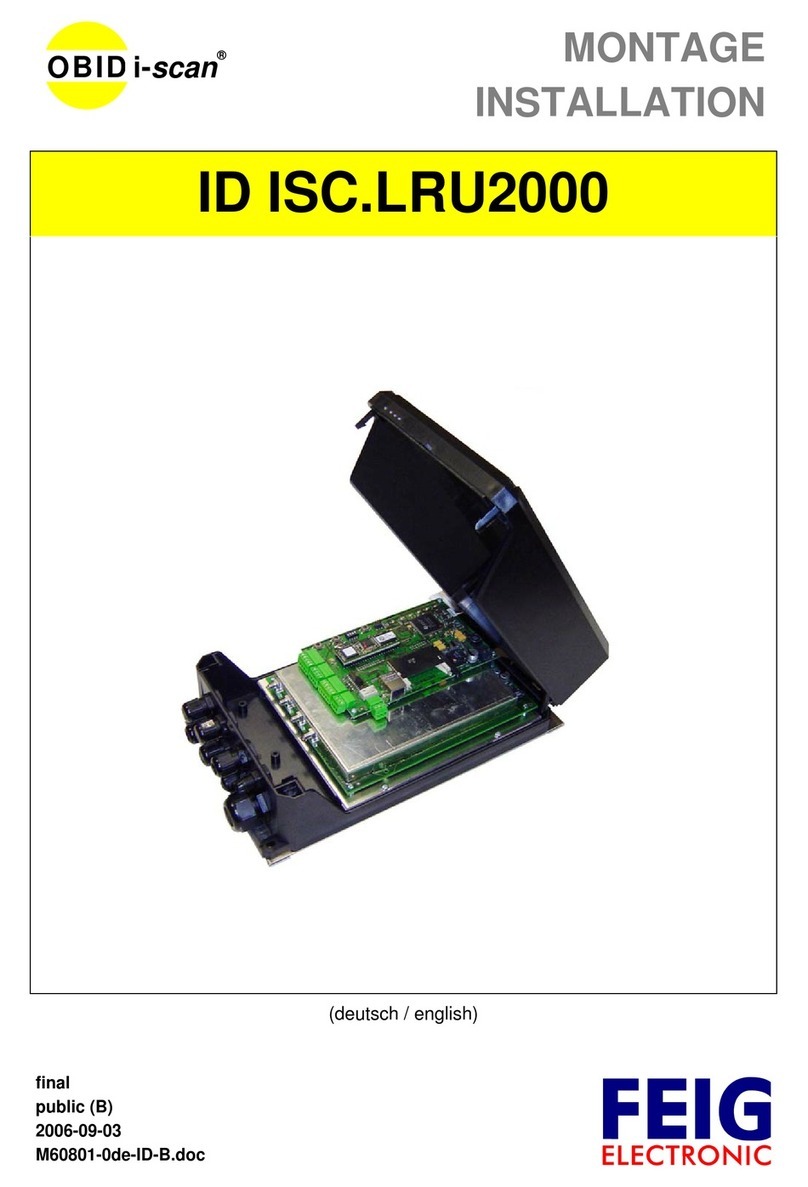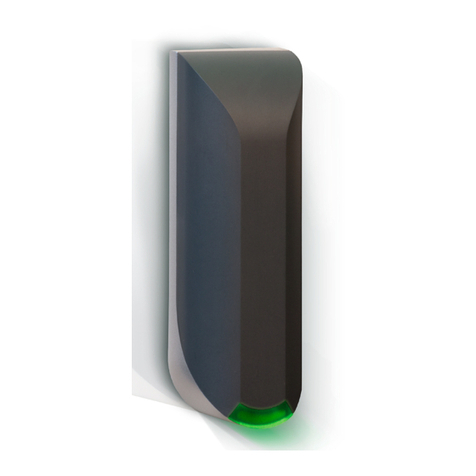Handpoint HiPlus User manual

!
Standalone HiPlus Card Reader
User Guide

HiPlus Card Reader User Guide
CONTENTS
1. Quick Getting Started Guide 3............................................................................
1.1. What’s in the Box? 3...................................................................................
1.2. Getting to Know Your HiPlus card reader 4........................................................
1.3. Get Started 6...........................................................................................
1.4. How it Works 9.........................................................................................
2. HiPlus card reader Specifications 10.....................................................................
2.1. Hardware Technical Specification 10...............................................................
2.2. Terminal Software and Configurations 10..........................................................
2.3. Security 11..............................................................................................
3. HiPlus card reader User Guide 11........................................................................
3.1. Transactions 11.........................................................................................
3.1.1. Chip & Pin 11.....................................................................................
3.1.2. Chip & Signature 12.............................................................................
3.1.3. Fallback to Magnetic Stripe 12.................................................................
3.1.4. Magnetic Stripe 13...............................................................................
3.1.5. Pin Bypass 13.....................................................................................
3.1.6. Gratuity/Tips 14..................................................................................
3.1.7. Account Type Selection 15......................................................................
3.1.8. Cardholder Application Selection 16..........................................................
3.3. Administration Menu 17...............................................................................
3.4. View Information 18...................................................................................
3.6. Updating the HiPlus card reader 19.................................................................
4. Troubleshooting 20..........................................................................................
4.1. Troubleshooting issues 20.............................................................................
4.1.1. Communication Errors 20.......................................................................
4.1.2. Flash Corruption Errors 20......................................................................
4.2. HiPlus card reader Messages 21......................................................................
4.2.1. Successful Transaction Messages 21...........................................................
4.2.2. Other Transaction Messages 23................................................................
!©2019 Handpoint1

4.2.3. Error Transaction Messages 23.................................................................
4.2.2. Updating Messages 27...........................................................................
4.2.3. Administration Messages 28....................................................................
5. Getting Support 30..........................................................................................
6. Glossary 31...................................................................................................
7. FAQs 32.......................................................................................................
!©2019 Handpoint2

1. QUICK GETTING STARTED GUIDE
This guide will help you get to know your HiPlus card reader and make your first transaction as
a standalone payment terminal.
1.1. WHAT’SIN THE BOX?
When you receive the box, check if the Handpoint seal is still intact. It should show you if
someone has opened the box before you. Inside the box you should find your HiPlus card
reader and a USB type-C connector. Depending on your specification, you may also have
included a nano SIM card.
!©2019 Handpoint3

1.2. GETTING TO KNOW YOUR HIPLUS CARD READER
Here is your HiPlus card reader from all angles. The table below describes what you see.
#
Name
Description
1
Near-field
Communication
(NFC) Status
Lights
These lights indicate the status of a contactless transaction
2
Icons and other
information
Here on the screen are icons which show battery life, clock and
signal strength (from the SIM card)
3
Cancel
To cancel transactions when applicable, or other actions
4
Back
To erase keyed numbers
5
OK
To select or confirm actions
6
Up/down arrows
To move up and down menus, to select press the OK button (see no.
5)
7
Power
To turn on and off, hold down this button for a couple of seconds
!©2019 Handpoint4

* The HiPlus card reader can sit on this ** The printer dock can sit on this"
printer dock to charge it and print charging cradle to charge it (as well"
receipts the HiPlus card reader, if slotted onto
the printer dock)"
8
Charging Port
Plug in the charging cable (USB Type C connector) to a plug to
charge the battery. Optional accessories: printer dock* and the
charging base**
9
SIM slot
Use a SIM tray eject pin (or paperclip) to insert into the small pinhole
opening. Apply a small amount of pressure until the SIM tray pop
outs, where then you can pull it straight out. It is important you insert
your SIM card in the second space of the SIM tray (nearest the card
reader). The HiPlus card reader requires a nano SIM card without a
PIN.
10
Magnetic stripe
reader
Swipe card with the magnetic stripe facing forward
11
Europay,
MasterCard and
Visa (EMV) chip
reader
Insert card with chip into the slot
12
Hardware label
Shows the Hardware Version (HW ver), Serial Number (SN) and
barcode, which shall be required for identifying your card reader for
updates or support questions.
!©2019 Handpoint5

1.3. GET STARTED
!
To enable the 3G standalone feature and start a transaction with your HiPlus card reader, you
will need to follow the below steps:
1. Your card reader needs to be set up and activated under your Merchant Account by your
card payment provider. Please confirm with that provider that this has been completed.
2. Take out the SIM tray (see #9 in section 1.2) by using a SIM tray eject pin (or paperclip) to
insert into the small pinhole opening. Apply a small amount of pressure until the SIM tray pop
outs, where then it can be pulled straight out. It is important the SIM card is inserted in the
second space of the SIM tray (nearest the card reader)."It is a nano size slot and does not fit a
micro or regular-sized sim cards."
3. Press [Power button] to turn on the device and it may prompt you to enter the date and
time settings.Please configure both accurately, selecting"[OK button] when you want to
move on from each part: 'Year', 'Month', 'Day', 'Hours', 'Minutes', 'Seconds'"(unless it has been
pre-configured). If it carries out a time-out and cancels your date/time configuration process,
you can turn off and restart the card reader to complete this step.
4. The reader will try to connect automatically to the mobile network using default parameters.
5. Just in case, if the device can’t connect to the mobile network it means that your sim card
needs specific APN settings or username/password which can be entered manually by clicking:
a)"" [Up arrow]"
b) 'Settings'"
c) 'Mobile network' "
d) 'Set up a new network'
6. Once the reader has successfully connected to the mobile network, a signal strength bar
should appear on the top right corner of the device screen (next to the battery sign). If the
signal strength bar isn’t displayed, it unfortunately means the connection to the mobile network
was unsuccessful. So please turn off the device and try again.
7. When the device has successfully connected to the mobile network, you are ready to fetch
the initial update.
a) To do that you just need to press"" [OK button] to start the update. Alternatively
you can go to the main menu by clicking"[Up arrow], 'Settings', 'Update card
reader'.
!©2019 Handpoint6

"b) Press"[OK button] to initiate download of the correct payment terminal software
and merchant configuration.
8. Once the card reader has downloaded the software and configuration, it should re- start
automatically. If the reader does not re-start automatically and just turns off"after the
downloads, you will need to push"[Power button] to re-start the device and finish the
installation.
9. At this point you should be prompted to enter the first 6 digits of your shared secret. These
6 digits can be numeric from 0 – 9 or"letters"a"– f. As the keypad on the Hi5 only contains
numbers, in order to enter the alphanumeric characters please use:
""[Key number 2] to enter characters: a, b, c.""
""Press once for "a", twice for “b”, three times for “c", then four times for the number “2”."
"[Key number ]"to enter characters: d, e, f."
"""Press once for "d", twice for “e", three times for “f”, then four times for the number “3"."
10. Once the first 6 digits of the shared secret have been successfully entered, you will be
asked to create a 4-digit password to protect the refund/reversal menu. This is important to
prevent someone stealing a device and carrying out a refund to their own card. If your card
payment provider managed this process on your behalf, then they will be able to securely share
this password with you.
11. Once the shared secret key and the refund menu password have been entered, the device
is fully set up and ready to start transacting.
Please remember that in order to start a transaction you have to click"[OK button] before
entering an amount. Alternatively you can also go to the main menu, by selecting [Up
arrow] and clicking “Sale”.
If you are using the printing dock accessory, then you can choose to to opt in/out of automatic
printing through the dock by carrying out the following steps on your HiPlus card reader:
!©2019 Handpoint7

"
a)"" [Up arrow]"
b) ‘Settings’"
c) ‘Printing dock options’"
d) Choose either:"
- ‘Enabled’: The merchant receipt will be automatically printed out, and then the
merchant is asked to choose the method of providing the card receipt to the
consumer: paper (via printer dock), SMS, e-mail, or no receipt. This is the default
setting.
- ‘Disabled’: The merchant receipt will not be printed and instead the merchant
is asked to choose the method of providing the card receipt to the consumer:"
paper (via printer dock), SMS, e-mail, or no receipt.
!©2019 Handpoint8

1.4. HOW IT WORKS
This section shall demonstrate a short version of how the Handpoint solution technically works.
1. Merchant initiates a transaction directly on the HiPlus card reader
2. Customer inserts card and follows the directions on the HiPlus card reader screen
3. The HiPlus card reader sends the encrypted transaction information via 3G to the
Handpoint gateway in the cloud on Amazon Web Services (AWS).
4. The transaction is processed using the acquirer
5. The Handpoint gateway receives a response from the acquirer and forwards the
encrypted response to the HiPlus card reader
6. The HiPlus card reader reads the response and finalises the transaction.
7. Customer removes card and the merchant retrieves the merchant receipt (if using the
printing dock and opted for automatic printing - see section 1.3) and then the
merchant is prompted by the the HiPlus card reader to select the method of providing
the customer receipt:
a. Paper (is using the printing dock)
b. SMS (entering the phone number either using the keypad or directly on the
touchscreen of the HiPlus card reader)
c. E-mail (using the touchscreen of the HiPlus card reader).
d. No receipt
!©2019 Handpoint9
3G

2. HIPLUS CARD READER SPECIFICATIONS
Below are the technical specifications of the HiPlus card reader and information about the
software and configurations.
2.1. HARDWARE TECHNICAL SPECIFICATION
2.2. TERMINAL SOFTWARE AND CONFIGURATIONS
Handpoint develops the terminal software as well as the terminal configurations. The
configuration is specific to each merchant and cannot be seen or modified by the user. The
configurations are created by the Handpoint system and remotely pushed to your HiPlus card
reader.
In the case of a critical update, Handpoint can automatically and remotely push the latest
software or configuration version onto your HiPlus card reader.
Section 3.4 shows you how to find which software and configuration versions your HiPlus card
reader has.
Display
320 x 240 px TFT Color LCD
Card readers
Landing type smart card reader, triple track bi-directional
magnetic card reader
Battery
Rechargeable Li-ion 3.7V, 1180 mAh
Connectivity
3G
Certifications
CE, FCC, PCI PTS 4.x, EMV Level 1 Contact, EMV Level 2
Contact, EMV Level 1 Contactless, VISA payWave, MasterCard
Contactless, American Express Expresspay, Discover Zip,
Apple® MFi
Dimensions (LxWxH), mm
133 x 71 x 19
Weight, g
180
Operational temperature
range
-10 °C to +40 °C / 5 to 70% RH
Storage temperature range
-15 °C to +50 °C / 5 to 70% RH
Power Supply
5V through USB or contact pins
!©2019 Handpoint10

2.3. SECURITY
All card information is encrypted using Triple Data Encryption Algorithm (3DES) with a Derived
Unique Key Per Transaction (DUKPT) key management process. Each transaction is encrypted
with 3DES using a unique key per transaction before being sent to the Handpoint gateway. The
Handpoint’s terminal software is certified as PCI Point-to-Point Encryption (P2PE) compliant.
For security reasons, it is essential that during a transaction the merchant and all employees
must not request a cardholder to divulge their PIN nor accept the PIN from the cardholder in
an oral or written manner.
3. HIPLUS CARD READER USER GUIDE
Here are further instructions how to use the different functions of your HiPlus card reader.
3.1. TRANSACTIONS
Transactions are initiated by HiPlus card reader. Depending on your card payment provider, the
following features may be enabled.
3.1.1. Chip & Pin
The HiPlus card reader supports Chip & PIN cards. For Chip & PIN transactions use the EMV
chip reader (see #11 in section 1.2).
This is an example of what happens in a Chip & PIN transaction:
1. Transaction is initiated directly on the HiPlus card reader by clicking"[OK button]
before entering an amount. Alternatively you can also go to the main menu, by
selecting""[Up arrow] and clicking “Sale".
2. When message “INSERT CARD” appears, insert card in the EMV chip reader (see #11 in
section 1.2) with the chip facing up and towards the HiPlus card reader"
3. Enter PIN using the keypad and press [OK button] (Use [Back button] to erase
and then use the keypad to re-enter pin if you make a mistake), or cancel by "
"
pressing [Cancel button]
4. When message “REMOVE CARD” appears, remove the card from the EMV chip reader
The merchant is responsible for providing the customer with the receipt from the HiPlus card
reader.
!©2019 Handpoint11

3.1.2. Chip & Signature
The HiPlus card reader supports chip & signature cards. For chip & signature transactions use
the EMV chip reader.
This is an example of what happens in a chip & signature transaction:
1. Transaction is initiated by the HiPlus card reader
2. When message “INSERT CARD” appears, insert card in the EMV chip reader (see #11 in
section 1.2) with the chip facing up and towards the HiPlus card reader"
3. Confirm the amount by pressing [OK button] or cancel by pressing [Cancel
button]
The merchant is responsible for providing the customer with the receipt from the HiPlus card
reader. The customer should sign for the receipt either digitally (on the touchscreen of the
HiPlus card reader) or on the signature line of a paper receipt."
3.1.3. Fallback to Magnetic Stripe
If the HiPlus card reader cannot read the chip for some reason it will fallback to magnetic stripe.
The HiPlus card reader will prompt you to remove the card from the EMV chip reader (see #11
in section 1.2) and swipe the card using the magnetic stripe reader (see #10 in section 1.2). The
HiPlus card reader might ask you to remove and insert the card into the EMV chip reader a
couple of times before falling back to magnetic stripe.
This is an example of what happens if a transaction falls back to magnetic stripe:
1. Transaction is initiated by the HiPlus card reader
2. When message “INSERT CARD” appears, insert card in the EMV chip reader (see #11 in
section 1.2) with the chip facing up and towards the HiPlus card reader
3. If the HiPlus card reader cannot read the chip message “REMOVE CARD” appears,
remove the card
4. When message “INSERT CARD” appears, insert card in the EMV chip reader
5. If the HiPlus card reader cannot read the chip message “REMOVE CARD” appears,
remove the card
6. When message “INSERT CARD” appears, insert card in the EMV chip reader
7. If the HiPlus card reader cannot read the chip message “REMOVE CARD” appears,
remove the card
!©2019 Handpoint12

8. When message “SWIPE CARD” appears, swipe card using the magnetic stripe reader
with the magnetic stripe facing to the front"
9. Confirm the amount by pressing [OK button] or cancel by pressing [Cancel
button]
The merchant is responsible for providing the customer with the receipt from the HiPlus card
reader. The customer should sign for the receipt either digitally (on the touchscreen of the
HiPlus card reader) or on the signature line of a paper receipt."
3.1.4. Magnetic Stripe
The HiPlus card reader supports cards that only have magnetic stripes. To do a transaction with
a magnetic stripe card use the magnetic stripe reader (see #10 in section 1.2). If the card has a
chip the HiPlus card reader will prompt you to use the EMV chip reader.
This is an example of what happens in a magnetic stripe transaction:
1. Transaction is initiated by the HiPlus card reader
2. When message “INSERT CARD” appears, swipe card using the magnetic stripe reader
with the magnetic stripe facing to the front"
3. Confirm the amount by pressing [OK button] or cancel by pressing [Cancel
button]
The HiPlus card reader produces the receipt which the merchant is responsible for giving to the
customer who, in turn, should sign for the receipt either digitally (on the touchscreen of the
HiPlus card reader) or on the signature line of a paper receipt.
3.1.5. Pin Bypass
Pin bypass is only enabled for specific acquirers. Pin bypass allows the customer to choose if
they want to enter pin or not.
This is an example of what happens in a Chip & PIN transaction with pin bypass:
1. Transaction is initiated by the HiPlus card reader
2. When message “INSERT CARD” appears, insert card in the EMV chip reader (see #11 in
section 1.2) with the chip facing up and towards the HiPlus card reader"
!©2019 Handpoint13

3. To bypass the pin, press [OK button] instead of entering the pin (if pin bypass is not
enabled, the HiPlus card reader will show the message “NOT ALLOWED”)
4. When message “REMOVE CARD” appears, remove the card from the EMV chip reader
The merchant is responsible for providing the customer with the receipt from the HiPlus card
reader."
3.1.6. Gratuity/Tips
To get the gratuity/tips feature, you have to ask for it especially from your card payment
provider. If you request to include gratuity/tips as an option during the transaction process, the
menu appears before pin entry where the customer can choose the amount.
Below is an example of the default gratuity/tip menu for a £20,00 sale:
This is what happens in a Chip & PIN transaction with gratuity/tips enabled:
1. Transaction is initiated by the HiPlus card reader
2. When message “INSERT CARD” appears, insert card in the EMV chip reader (see #11 in
section 1.2) with the chip facing up and towards the HiPlus card reader
3. When the gratuity/tips menu appears, scroll menu using [Up arrow] and "
[Down arrow] to select how much you want to tip"
4. Press [OK button] to select tip amount, if you select “ENTER AMOUNT”:
a. Enter tip amount using the keypad (use [Back button] to erase and then the
keypad to re-enter amount if you make a mistake)"
b. Press [OK button]
5. Enter PIN using the keypad and press [OK button] (use [Back button] to erase
Menu item
No tip
18% £3,60
20% £4,00
25% £5,00
Enter amount
!©2019 Handpoint14

and then the keypad to re-enter pin if you make a mistake)
6. When message “REMOVE CARD” appears, remove the card from the EMV chip reader
The merchant is responsible for providing the customer with the receipt from the HiPlus card
reader.
3.1.7. Account Type Selection
The account type selection is only enabled for specific acquirers and only appears for cards
that have multiple accounts. The menu appears before pin entry where the customer can
choose which account he wants to use for that transaction. "
Below is an example of menu items. Please note that they differ between acquirers and cards:
This is what happens in a Chip & PIN transaction with the account type selection enabled:
1. Transaction is initiated by the HiPlus card reader
2. When message “INSERT CARD” appears, insert card in the EMV chip reader (see #11 in
section 1.2) with the chip facing up and towards the HiPlus card reader
3. When the account type menu appears, scroll menu using [Up arrow] and "
[Down arrow] to find the right account type"
4. Press [OK button] to select account type"
5. Enter PIN using the keypad and press [OK button] (use [Back button] to erase
and then the keypad to re-enter pin if you make a mistake)
6. When message “REMOVE CARD” appears, remove the card from the EMV chip reader
The merchant is responsible for providing the customer with the receipt from the HiPlus card
reader.
Menu item
Default
Savings
Cheque/debit
Credit
!©2019 Handpoint15

3.1.8. Cardholder Application Selection
The cardholder app selection is only enabled for specific acquirers. A menu appears before PIN
entry where the customer can choose which payment application is used for that transaction.
Here is a list of menu items:
This is what happens in a Chip & PIN transaction with the cardholder point of sale application
selection enabled:
1. Transaction is initiated by the HiPlus card reader
2. When message “INSERT CARD” appears, insert card in the EMV chip reader (see #11 in
section 1.2) with the chip facing up and towards the HiPlus card reader
3. When the Application Selection menu appears, scroll menu using [Up arrow] and
[Down arrow] to find the correct payment application"
4. Press [OK button] to select that payment application"
5. Enter PIN using the keypad and press [OK button] (use [Back button] to erase
and then the keypad to re-enter pin if you make a mistake)
6. When message “REMOVE CARD” appears, remove the card from the EMV chip reader
The merchant is responsible for providing the customer with the receipt from the HiPlus card
reader."
"
"
"
"
"
Menu item
Credit
Debit
Cash Benefit
Food Stamp
Gift Card
Private Label
!©2019 Handpoint16

3.3. ADMINISTRATION MENU
To access the administration menu:"
1. Press [Cancel button] and then (back button)"
2. Enter password: 746723 and press [OK button]
3. Scroll menu using [Up arrow] and [Down arrow]"
4. To go into sub-menus press [OK button]"
5. To select menu items press [OK button]"
6. To go out of menus press [Cancel button]
About each menu item:
Menu item
Sub-menu
items
Description
Version info
-
Terminal software version e.g. mPOS v.1.7.1 (236)
Device type
Save and Reset
Select to save any changes you have made in this sub-
menu, the HiPlus card reader restarts.
Config
Reset flash
Resets to factory settings, next time you do a transaction
the HiPlus card reader will download and install the
software and configurations again.
Save and Reset
Select to save any changes you have made in this sub-
menu, the HiPlus card reader restarts.
Beep
Toggle
Turn beep on or off by selecting toggle.
Save and
Reset
-
Select to save any changes you have made in the
administration menu, the HiPlus card reader restarts.
!©2019 Handpoint17
Administration menu password:
746723

3.4. VIEW INFORMATION
To view information about your HiPlus card reader:"
1. Press [Cancel button] then [Up arrow] on the keypad
2. Scroll to see information using [Up arrow] and [Down arrow]"
3. To exit, either wait a couple of seconds or press [Cancel button]
About the information you see:
* This information is not relevant for when the HiPlus card reader is being used as a
standalone as it uses 3G rather than Bluetooth communication
Menu item
Description
SN
Serial number of HiPlus card reader e.g. 1916009227
mPOS
Terminal software version e.g. v.10.1.2
TAG
Compilation type e.g. HiPlus
COMs
Type of connection used e.g. Bluetooth*
BT
The name of your Bluetooth connection e.g. PP0615009227*
Pass
Bluetooth password e.g. 0000*
Addr
MAC address of the bluetooth module*
Config
Configuration version e.g. 2
Flash
This has information about the flash memory, used by Handpoint
quality assurance
EMV
EMV version e.g. 2.00 03 210514
Pinutil
Software library version, such as for communications
PayEngine
Software library version (regarding EMV programming)
!©2019 Handpoint18

3.6. UPDATING THE HIPLUS CARD READER
If you need to manually update the card reader, you can go to the main menu by clicking"""
(Up arrow), 'Settings', then 'Update card reader'."
Handpoint may also push updates automatically and remotely to your HiPlus card reader."
This is what happens when Handpoint pushes a non-critical update to your HiPlus card reader:
1. Transaction is initiated by the HiPlus card reader
2. When message “INSERT CARD”appears, insert card in the EMV chip reader (see #11 in
section 1.2) with the chip facing up and towards the HiPlus card reader"
3. Enter PIN using the keypad and press [OK button] (use [Back button] to erase
and then the keypad to re-enter pin if you make a mistake)
4. When message “REMOVE CARD” appears, remove the card from the EMV chip reader
5. The message “UPDATING READER” appears and the HiPlus card reader starts
downloading and installing the update, this only takes a couple of seconds. When the
HiPlus card reader has finished the message “UPDATE COMPLETE” appears.
This is what happens when Handpoint pushes a critical update to your HiPlus card reader:
1. Transaction is initiated by the HiPlus card reader
2. When message “INSERT CARD” appears, insert card in the EMV chip reader (see #11 in
section 1.2) with the chip facing up and towards the HiPlus card reader"
3. Enter PIN using the keypad and press [OK button] (use [Back button] to erase
and then the keypad to re-enter pin if you make a mistake)
4. The message “TRANS. DECLINED“ appears will appear on the screen
5. When message “REMOVE CARD” appears, remove the card from the EMV chip reader
6. The message “UPDATING READER” appears and the HiPlus card reader starts
downloading and installing the update which only takes a couple of seconds. When the
HiPlus card reader has finished the message “UPDATE COMPLETE” appears
7. After the HiPlus card reader has finished updating, you can initiate the transaction again
to charge the customer.
!©2019 Handpoint19
Table of contents
Other Handpoint Card Reader manuals

